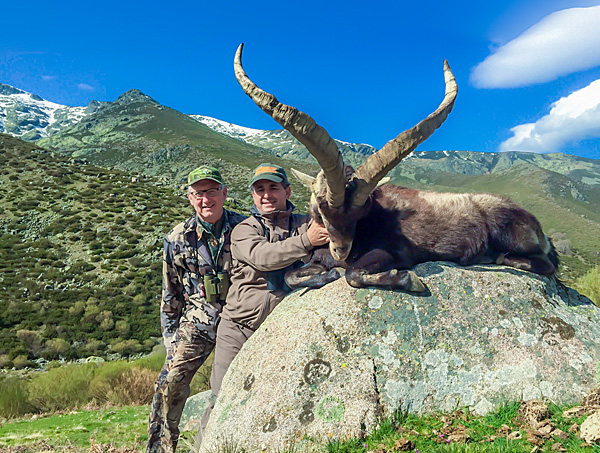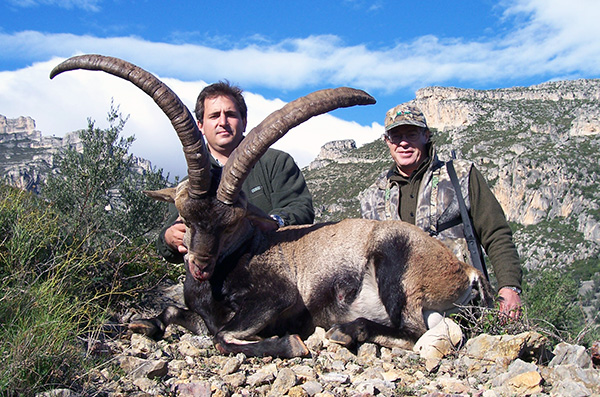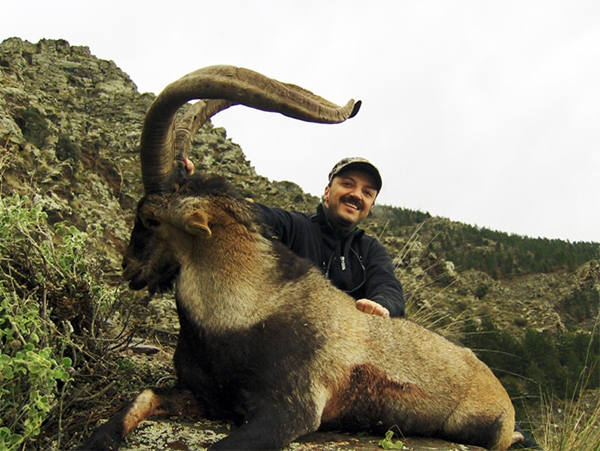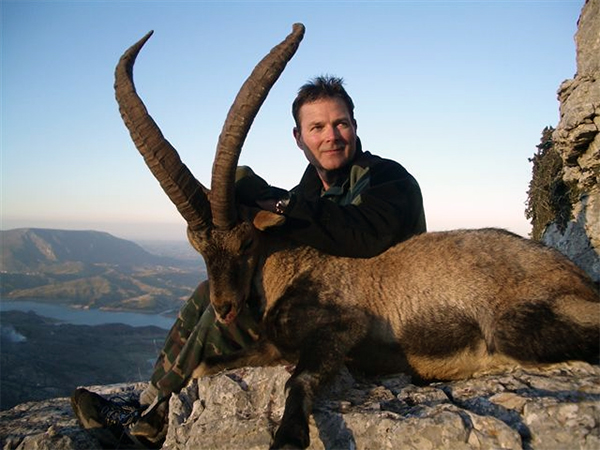Adventure Planner
Spanish (Mediterranean) Ibex
Spain is a beautiful and historic country to visit, and the luxurious accommodations make this a great destination for not only individual hunters, but also couples and families. Spanish Ibex (or Mediterranean Ibex) are sought after by many European hunters and, above all, mountain hunting enthusiasts. The shape of the horns and the color of the hide distinguish 4 sub-species that take their names from their respective habitats.
Our trusted outfitters hunt in the best private trophy quality areas, as well as the famous Spanish National Game Reserves that are well known for extremely good management and trophy quality, with a 100% record of successes. A guide/interpreter will meet you at the airport with all the paperwork required for importing the firearms, as well as the necessary licenses and permits. They accompany the client throughout the hunt until the moment of departure. Dependent on the terrain, 4×4 vehicles and sometimes horses will be utilized.

With horns in the characteristic shape of a lyre, the Gredos Ibex look most like a typical Spanish goat. After the Beceite Ibex, the Gredos Ibex is the largest and darkest in color and has the largest horns. Typically, the horns are lyre-shaped with a pronounced curve and a spiral turn of more than 180 degrees. Horn thickness decreases progressively from the base to the very thin tip. While this is the typical Gredos horn conformation, other horn shapes may be found in this region and even in the same herd.

The Beceite Ibex is the largest and darkest type with the largest horns. Typically, the horns are straighter than in Gredos Ibex and have a spiral turn of less than 180 degrees. Horn thickness remains constant for half the length, then decreases toward the tip, which is not as thin as in the Gredos race. While this is the typical Beceite horn conformation, other horn shapes may be found in this region and even in the same herd. They inhabit the Cabra area of Tortosa and Beceite.

Smaller and lighter in color than the Beceite and Gredos types, but larger and darker than the Ronda type, the horn size and shape of the South Eastern Ibex vary considerably from place to place, with those from the Sierra Nevada generally the largest. Horns from Tejada-Almijara tend to be the most distinctive, forming a circle with the tips growing toward the neck like those of a mouflon. The keel is smooth, making the horns almost round in cross-section. Permits are quite limited and hunting this Ibex often involves a hard and steep climb.

The Ronda Ibex is the smallest type of Spanish Ibex and has the smallest horns. Overall color is a light brown. The horns resemble those of an Alpine ibex, typically growing upward in a V-shape, then backward with a spiral turn of only 90 degrees. Horn thickness is constant for half the length, then decreases gradually to the broomed tips. While this is the typical Ronda horn conformation, other horn shapes may be found in this region and even in the same herd.
